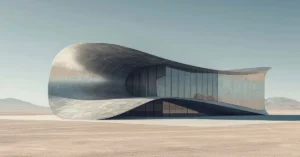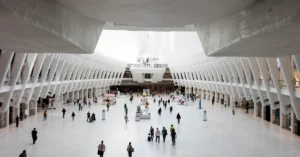Unlocking Mumbai’s Potential: The Mumbai Trans-Harbor Link (Sewri-Nhava Sheva Trans-Harbor Link)
Mumbai, often referred to as the “City of Dreams,” is India’s financial capital and one of the most densely populated urban centers in the world. As the city continues to grow, so do its transportation needs. In this bustling metropolis, where every inch of land is precious, the Mumbai Trans-Harbor Link, also known as the Sewri-Nhava Sheva Trans-Harbor Link, has emerged as a game-changer in the realm of urban connectivity. In this blog post, we’ll delve into the significance of this ambitious infrastructure project, its impact on Mumbai’s development, and what it means for both residents and the broader Indian economy.

The Need for Connectivity
Mumbai, with its seven islands, is naturally predisposed to be a city with numerous water bodies. While this has added to its scenic beauty, it has also posed significant challenges for transportation and connectivity. The city’s growth has been primarily radial, with most development happening in the southern part, closer to the Arabian Sea. On the other hand, the eastern part of Mumbai, which includes areas like Navi Mumbai and Nhava Sheva, has also witnessed substantial industrial and residential expansion. However, these two halves of the city have remained somewhat isolated from each other due to the natural barrier of the Mumbai Harbor.
This geographical separation led to a dire need for a bridge or tunnel that would connect the island city to the mainland and facilitate the seamless movement of people and goods. The solution to this problem came in the form of the Mumbai Trans-Harbor Link, a project that aims to bridge the gap between Mumbai and its eastern suburbs.
The Ambitious Sewri-Nhava Sheva Trans-Harbor Link Project
The Mumbai Trans-Harbor Link is a massive infrastructure undertaking that will link Sewri in South Mumbai to Nhava Sheva on the mainland across the Mumbai Harbor. The project’s primary component is a six-lane bridge, expected to be one of the longest sea bridges in India upon completion. It will span approximately 22 kilometers, significantly reducing travel time and congestion for those commuting between the island city and its eastern suburbs.
The bridge will be supported by pillars, some of which will be erected in the harbor waters, making it an engineering marvel in itself. Additionally, a separate four-lane bridge is planned to connect Sewri to the Mumbai Port area, further enhancing connectivity in the region.
The Promise of Economic Growth
The Mumbai Trans-Harbor Link isn’t just about connecting two parts of the city; it’s a catalyst for economic growth and development. Here are some of the ways it is poised to transform Mumbai:
- Reduced Congestion:
Mumbai’s traffic congestion is legendary, causing daily hardships for commuters and affecting the city’s productivity. The Trans-Harbor Link will divert a significant portion of this traffic away from the existing bridges and roadways, easing congestion and reducing travel times. - Boosting Trade:
Nhava Sheva is one of India’s busiest ports, handling a substantial portion of the country’s container traffic. The new link will facilitate smoother movement of goods to and from the port, potentially increasing trade and economic activities in the region. - Real Estate Boom:
As connectivity improves, areas in the eastern suburbs, which were previously considered distant, are becoming more attractive for both residential and commercial development. This is expected to lead to a real estate boom in these areas, opening up new opportunities for investors and homebuyers. - Job Creation:
Infrastructure projects of this scale require a significant workforce, from construction labor to engineers and administrative staff. The Mumbai Trans-Harbor Link is expected to create thousands of jobs, providing livelihoods to many. - Tourism and Leisure:
The Trans-Harbor Link will offer stunning views of the Mumbai skyline and the Arabian Sea. It’s expected to become a tourist attraction in its own right, potentially boosting tourism in the region and creating opportunities for the hospitality sector.
Challenges and Sustainability
While the Mumbai Trans-Harbor Link holds immense promise, it also comes with its share of challenges. Environmental concerns, including the impact on marine life and coastal ecosystems, must be addressed. The construction process itself poses challenges, considering the delicate balance between development and preservation of the environment.
To mitigate these challenges, the project planners have incorporated sustainable practices and environmental safeguards into the design and construction process. Additionally, steps are being taken to ensure that local communities are involved in decision-making processes to address their concerns and preserve their way of life.
Conclusion
The Mumbai Trans-Harbor Link is not just a bridge; it’s a lifeline that holds the potential to reshape Mumbai’s urban landscape. As it inches closer to completion, the city and its residents eagerly await the transformative impact it promises to bring. With reduced travel times, increased economic opportunities, and improved connectivity, this ambitious project is set to unlock Mumbai’s true potential as a global city of the future.
For more SketchUp tutorials you can check out https://www.sketchupguru.com/blog/
You can also check more tutorial videos for sketchup on our YouTube Channel,
https://www.youtube.com/c/SketchupGuru
To know about the Top Online 3D Rendering Courses for 2022 click,













